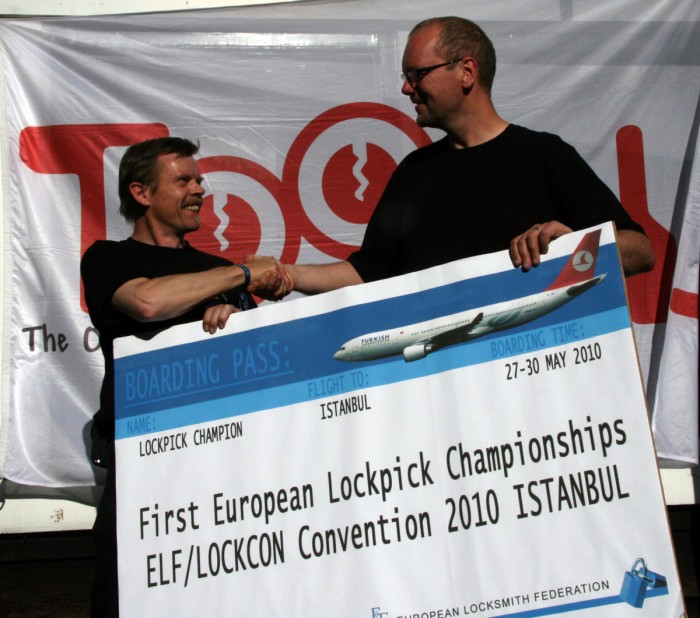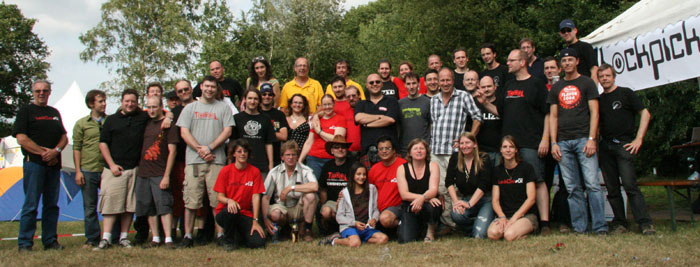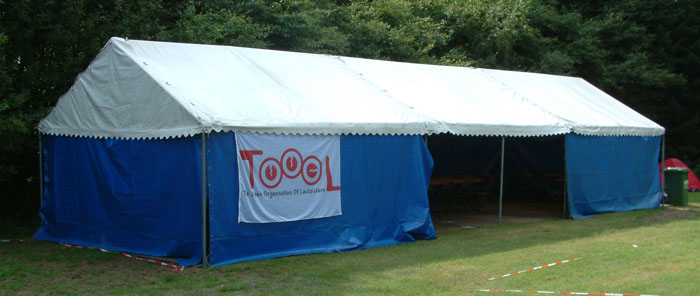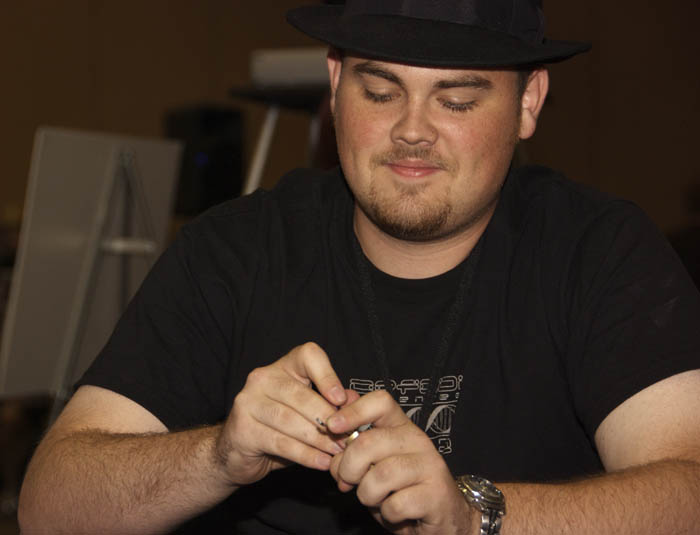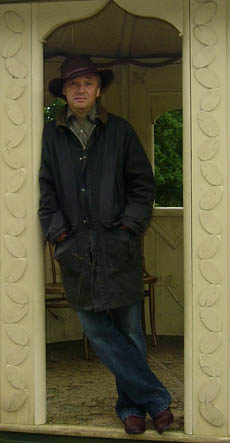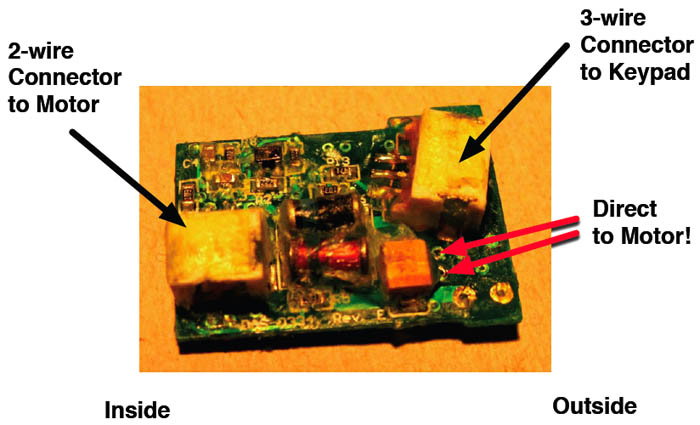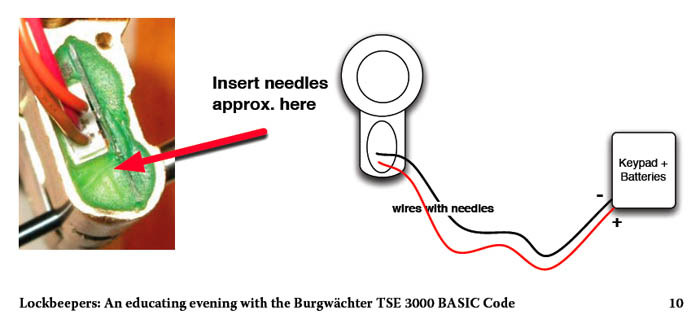Hurrying to finish this post before I start packing for DefCon in Vegas. Exciting news: it looks as if LockCon 2010 and the accompanying lockpicking championships will be held in Turkey. The events will coincide with the convention of the ELF, the European Locksmith Federation. This means that participants and visitors to LockCon can also visit this (rather cool) lock-related ELF convention. More details can be found below, and I will probably also re-visit this topic in the coming weeks and months.
On another front, there’s more information about lock-related events at the HAR convention that is happening just two weeks from now. Most of that information is written FAQ-style, as you will see below.
My next post will most likely be from sunny Las Vegas…
ELF – Turkey – LockCon 2010 – Lockpicking championships
Wow … Just received an exiting call I have been waiting on for weeks now … we have ‘green light’!

At the ELF meeting in Poland I was approached by the President of ELF Turkey. I learned the Turkish Locksmiths now officially became part of ELF (European Locksmith Federation) and will organize the yearly ELF convention in 2010 in Turkey. He then asked me if it was possible to organize our yearly lockpick championships at this ELF convention in 2010. A great offer, especially if you keep in mind they are willing to sponsor us financially to make it all happen. But instead of saying ‘yes Sir’ immediately, I asked for some time to think about it. After all, the lockpick championships we have in Sneek (The Netherlands) are the most international lockpick championships in the world, but only because they are part of our yearly ‘lockcon’ conference. It is the combination of LockCon and the Lockpick championships that make it such a great event.
After some thinking about it, we made him a counter offer: we are willing to organize the lockpick championships in Turkey, but only if we can also host LockCon at the same event (a day before the ELF convention). And today I (finally) received the green light!
Personally I am thrilled about this deal as it really means something for the locksport community to be taken this serious by the industry. With only nineteen days before this years championships at the HAR conference in Vierhouten (The Netherlands) I have an important announcement to make: As part of the sponsorship deal with ELF, the winners of this years lockpick championships at HAR 2009 will win an ‘all in’ ticket to LockCon/ELF Turkey 2010 (‘all in’ means plane and hotel *). The same goes for the winner of the impressioning games and the combination lock manipulation game. So three ‘all in’ tickets can be won! (* disclaimer at the bottom of this posting)
The same goes for the lockpick championships in Germany. The winner of the German SSDeV ‘hand opening lockpick contest’ will win an ‘all in’ ticket’ to Turkey too. And since Oliver Diederichsen already won the 2009 impressioning games in Germany he will get his trip to Turkey sponsored too.
The last ticket we will get sponsored is for the winner of the US lockpick games at DEFCON17. Toool.US will be organizing these games in the lockpick village at DEFCON, and the winner of these games can represent the US locksport community at the official first European lockpick championships in Turkey 2010!
And I will personally see we all (the participants of previous LockCon events) will benefit from this sponsorship deal. So you do not have to win any of the games to get a good deal!
I am now packing my gear to go to DEFCON17 (Las Vegas) and look forward to see my friends in the lockpick village soon!
Hacking At Random 2009

The HAR LockPick championship FAQ
Normally Toool’s Dutch Open lockpick championships are held at the youth hostel in Sneek (Friesland, NL). However, if there is a special event or location that wants us there we can be persuaded to move to that location. And this has happened at previous Dutch hacker camps and will happen again at HAR.
It is crucial you read the following FAQ and register for the championships as fast as possible! Registration closes at August 5! (*Edit Barry: please mail lockcon09 @ toool nl)
First question in the FAQ:
Q: what kind of championships are there at HAR?
A: There will be three kinds of games: lockpicking, impressioning and safe combination lock manipulation.
Lest start with the lockpick championships:
Q: When will the Dutch Open lockpick championships be held?
A: On Saturday August 15 the games will start at 11:30. Depending on how fast the rounds go, the finals will most likely be at 18:30.
Q: Where will it be held?
A: As the games are part of the HAR conference, it will be held at the HAR campsite. For a moment we were tempted to do the games at the Lockpick village tent but at the end preferred to spend some money and battle on ‘solid ground’. For this purpose we rented the ‘paasheuvel zaal’ building for the entire saturday.
Q: What kind of locks will be used at the championships?
A: To give lockpickers from all over the planet a fair chance we decided to keep the exact brands secret until two minutes before the games.
Q: What can I win?
A: Traditionally we offer great prizes (as the contacts with the lock industry are pretty good and we always manage to arrange nice cut-away locks as prizes). This year we have something even more special: an all exclusive ticket (plane + hotel) to the first official European Lockpick championships at the ELF (European Locksmith Federation) conference in 2010 in Turkey! (* read disclaimer!) Of course the second and third prize winners will also receive something worthwhile.
Q: I am not a star lockpicker … why should I attend?
A: Lockpicking is fun, fun, fun, and you can only become good at something if you try and get more experienced. Not to mention that by lottery we will give away a nice cut-away lock, an official Toool pickset and some other nice prizes.
Q: How many people can attend?
A: There is room for a maximum of sixty people, so register fast!
Q: Is it possible to just visit the lockpick games?
A: This is possible. We have made a deal with the HAR organizers that (a limited number of) ‘known’ lockpickers can buy a special ‘day ticket’. These day tickets are valid on Saturday and Sunday. And we managed to squeeze a good deal out of them: for just 25 euro’s you can visit the championships on Saturday and stay till Sunday. This will allow you to see the lockpick presentations at 20:00 and 21:00 on Saturday evening. Just a small warning: you have to be a lockpicker to be able to make use of this deal! Please mail lockcon09 @ toool nl to apply for this deal!
Q: how are the games played?
A: The games are played (as always) according to the ‘Dutch rules’. These rules were optimized to give each participant a fair chance. This means (in short): per round, two people play against each other and will each receive a lock from us. If they manage to open the lock in under seven minutes, they write down their time. After seven minutes they switch locks, and again try to pick it in seven minutes. The person opening the most locks always wins, as two locks open is always better as one lock opened (no matter what times are scored). If both persons opened the same number of locks, the person doing so in the least amount of time wins. The winners of each round will receive a point, and in the next round pools will be made of people who do have one point and people who have zero point. At the next round, sets of two people will be made that have one point and they will play against each. In the other pools sets are made by people who have zero points. And so on, until four people have collected six point (* depending on the number of participants this number can change). In the semi-finals we will traditionally have special, more difficult, locks to pick. The rules will be discussed in detail before the games start. and other questions will be answered at the lockpick village.
Q: I still have a hard time imagining this …
A: Read the excellent article in Wired about one of the previous Dutch Open games, or view the video impression of the games and interview with last event’s winner Torsten Quast (MP4 17 minutes, 139 MB).
The impressioning games
Q: What is impressioning?
A: Impressioning is the art of filing a working key to a closed lock without any prior knowledge about the original key or the lock.
Q: How is this possible?
A: That is a little difficult to explain in a few sentences. Oliver Diederichsen (2009 champion of the impressioning games in Germany and holder of the record time of four minutes and XX seconds) wrote a book about this topic and there will be room to explain and demonstrate the impressioning technique at the lockpick village.
Q: When are the games?
A: We are not 100% sure yet, but most likely it will be on the last day of HAR: Sunday August 16 at 10:00 or 10:30 AM.
Q: Where will it be held?
A: We hope renting the ‘paasheuvel zaal’ building for the lockpick games on saturday is a 24 hour deal. As the impressioning games only take 60 minutes (and the winner will most likely open the lock in under five or six minutes) this would mean we can get the most of out if. If this is not the case we might have to shift the games to Saturday evening/night after the lockpick presentations, or play on sunday in the lockpick village tent.
Q: What kind of locks are used?
A: Abus is sponsoring the event with locks and blanks. The lock used will be a standard abus C83.
Q: What can I win?
A: First of all: your name will be added to the special challenge cup. This cup contains a special Abus watch that was a reward for winning the last Dutch Open impressioning games. Oliver Diederichsen turned the watch into a challenge cup that will move from winner to winner (read the full story here). And besides fame, we also offer a free ‘all inclusive’ ticket to the first European impressioning games at the ELF convention in 2010 in Turkey!
Q: I still have a hard time imagining this …
A: Have a look at this video. It was shot by Steffen Wernéry at the last Dutch Open impressioning championships and should give you a good idea about what the games look like.
The safe combination dial contest
Q: What is ‘safe combination lock manipulation’?
A: It is a technique used to open the combination lock used on safes without damaging it. It is the kind of thing you see in movies when they listen to the ‘clicks’ in the lock to open it.
Q: How does it work?
A: Standard safe combination locks can be opened by measuring small mechanical tolerances in the lock. Instead of listening for clicks we are achieving this by dialing known combinations and closely looking at the dial for fluctuations. Again, just as with impressioning this topic will be explained in the lockpick village.
Q: When are the games?
A: The finals will be held on Sunday, the qualifiers in the days before that.
Q: How do I qualify for the finals?
A: First of all you have to register! After we know exactly how many people will attend we can make a schedule. This is the rough outline of the games (it can change as it is only the second time ever such a championship is organized inside the locksport community) In short: it’s a knock-out system. At random, two players will be selected that will both receive an identical safe lock. Both locks will have the same combination and the same mechanical properties. Both players will start on the lock at the same time, and the person opening the lock first will go on to the next round! Depending on how many people attend there might be room for a ‘wildcard’. So just maybe all the people that get knocked out can battle for a place in the finals through a separate round. On Saturday evening/night there will be (limited) room for the people arriving on Saturday with a dayticket to earn a place into the finals on Sunday.
Q: What can I win?
A: Fame: If you win, you will be the first person to have ever won a safe combo game (in the locksport community). But if you managed to read all trough the bottom of this FAQ, you can guess it: the winner gets an ‘all inclusive’ flight+hotel ticket to the 2010 European safe combination contest at the ELF tradeshow in Ankara Turkey.
Q: I still have a hard time imagining this …
A: For more technical details read Matt Blaze his excellent article (PDF) on safe combo manipulation.
—
* and last but not least, an important disclaimer: I have reached a verbal agreement with ELF regarding this LockCon/Championships sponsorship deal. I completely expect them to come through on this one, but someone advised me to insert the following disclaimer anyway: Toool (and/or it’s members) can not be held responsible in any way, shape, or form if this sponsorship deal bounces after all.
